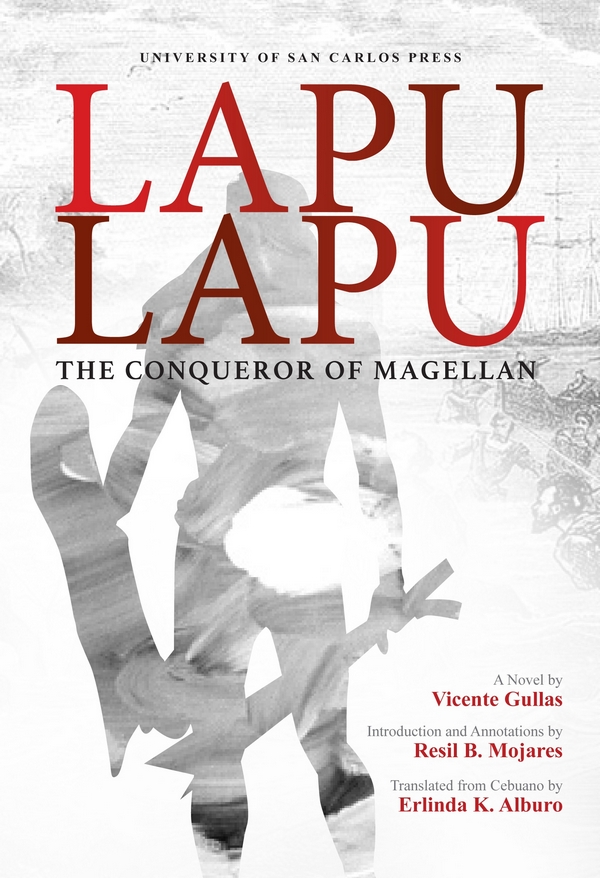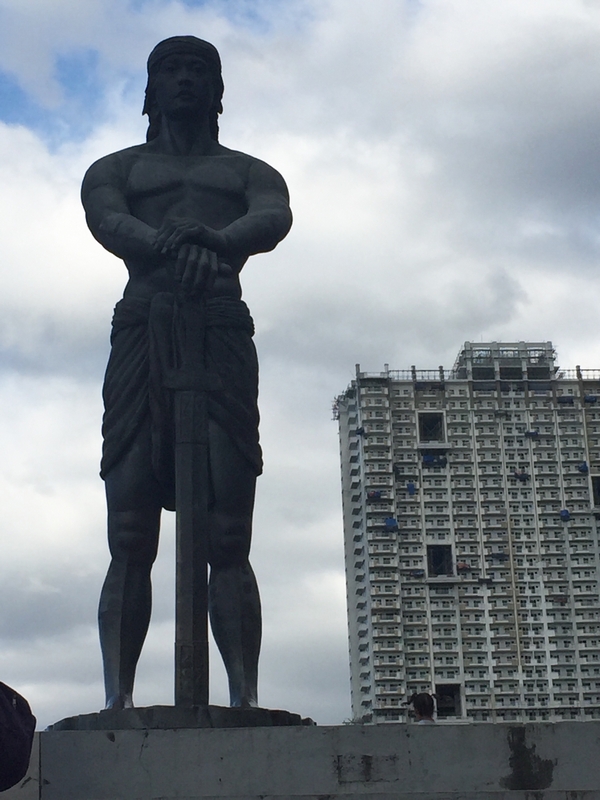A statue of Datu Lapu-Lapu, the legendary chieftain of Mactan, should stand on a prominent site within the vicinity of the Mactan Cebu International Airport (MCIA) for tourists and visitors to be introduced to the Visayan hero upon arrival.
Cebu-based archaeologist and local historian, Dr. Jose Eleazar “Jobers” Bersales made the suggestion on the heels of Cebu’s preparations for the 500th anniversary of the historic battle of Mactan, which will happen on April 27, 2021.
Bersales believed that having Lapu-Lapu’s statue in a place where people arrive and depart would educate tourists about his role in history.
“It’s like the Da Vinci Airport in Rome where there is a huge bust of the artist that meets everyone when they drive to and from the airport. No one from abroad has an idea about who Lapu-Lapu is. So the best thing to do is to put him right at the airport,” said Bersales.
The airport’s location which is only about nine kilometers from the site of the actual Battle of Mactan in 1521 makes it “appropriate” for a Lapu-Lapu statue, said Bersales.
Bersales is part of a non-government initiative responsible for activities related to the 500th anniversary of the encounter between the men of Portuguese explorer Ferdinand Magellan and the people of Mactan led by their chieftain, Lapu-Lapu who killed Magellan in the battle.

the book, “Lapu-Lapu: The Conqueror of Magellan” (left photo) will be released by the University of San Carlos (USC) Press to mark another historical and literary milestone in time for today’s 497th commemoration of the “Kadaugan sa Mactan. Right, a bust of the proud chieftain of Mactan in the Luneta Park.
Lapu-Lapu as ‘superhero’
A book, “Lapu-Lapu: The Conqueror of Magellan” will be released by the University of San Carlos (USC) Press, managed by Bersales, to mark another historical and literary milestone in time for this year’s 497th commemoration of the battle also known as “Kadaugan sa Mactan (the victory in Mactan).”
The book is a work of fiction originally written in the Binisayang Sugbuanon language by renowned educator Vicente Gullas, founder of the University of the Visayas (UV).
Gullas founded UV in 1919 and wrote numerous books on civic and character education.
The book, published in 1938 with the title “Si Lapu-Lapu: Ang Nagbuntog Kang Magellan”, was translated in English by Erlinda K. Alburo, former director of USC’s Cebuano Studies Center.
To put Gullas’ work into context, an extensive critical introduction was written by USC Professor Emeritus Resil Mojares.
Both Mejares and Alburo will be part of a book talk happening on May 5 at 10 a.m. at the Cebu City Public Library.
“Albeit fictional, the book illustrates how Lapu-Lapu has been invented and reinvented through the years,” said Bersales while he also pointed out that this was the only full length book ever written about the legendary chieftain.
USC Press publishes books on Cebu’s history, culture and heritage.
In his book, Gullas described Lapu-Lapu as a superhero particularly to instill civic education among the younger generation.
“His ultimate purpose was to utilize Lapu-Lapu’s character to instill civics education on children, a project which was so pervasive in the American colonial period … to instill the values of loyalty, bravery, courage,” said Bersales.
In his introduction, Mojares’ essay sums up what has been written about Lapu-Lapu in history, folklore and popular literature, while he reflects on the contested meanings and contemporary significance of the hero.
“Heroes are a product of a people’s imagining and not just a set of historically verifiable facts. This does not mean that these facts are unimportant, it is only to say that a study of heroes must attend to how they are interpreted, understood and imagined,” wrote Mojares.
“No Filipino hero has become as encrusted with fantasy and fiction as Lapu-Lapu,” he added.
Mojares also touched on the prevailing anxiety about how little is known about Lapu-Lapu.
There is doubt, he said, as to whether Lapu-Lapu’s feat in Mactan can be characterized as resistance against “foreign invaders” or a case of local politics.
“That Lapu-Lapu has not quite joined the pantheon of national heroes was dramatized in the controversy over the 40-foot brass Lapu-Lapu monument at the Rizal Park in Manila in 2004,” wrote Mojares.
Statue stays
Mojares was referring to calls from the National Historical Institute and some groups to have the Lapu-Lapu monument built at Rizal Park removed since it was “out of place” in “a site ostensibly reserved for the martyrs who died in Luneta.”
The statue, called the Sentinel of Freedom, was sculpted by national artist Juan Sajid Imao.
It was a gift from The Korea Freedom League and Poongsan Microtech Philippine Inc. “in appreciation and honor of the memory of freedom loving Filipinos who sent their sons to help save Korean democracy.”
Sought for comments then, Lapu-Lapu City Mayor Paz Radaza called for the controversial statue to be moved to Lapu-Lapu City on a man-made island located at the tip of Barangay Punta Engaño — site of the famous Battle of Mactan.
It would be just like New York’s Statue of Liberty, Radaza had then said.
But on March 14 this year, Radaza announced that she was supporting Sen. Richard Gordon’s call to let the 40-foot bronze statue of Lapu-Lapu stay in Rizal Park, 14 years after its presence was unveiled to the public.
Radaza explained that the city will just build its own huge statue of Lapu-Lapu for the man-made island on Punta Engaño in preparation for the 500th anniversary of the Battle of Mactan.
Gordon had fought for Lapu-Lapu’s spot in Rizal Park saying that the datu of Mactan is a national hero, whose bravery should be remembered and honored for refusing to give in to foreign invaders.


